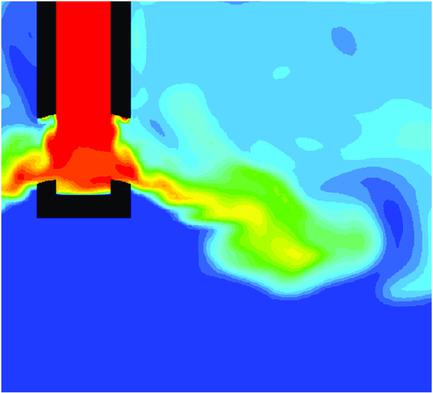当前位置:
X-MOL 学术
›
Steel Res. Int.
›
论文详情
Our official English website, www.x-mol.net, welcomes your
feedback! (Note: you will need to create a separate account there.)
Bubbly Mold Flow in Continuous Casting: Comparison of Numerical Flow Simulations with Water Model Measurements
Steel Research International ( IF 1.9 ) Pub Date : 2020-10-10 , DOI: 10.1002/srin.202000415 Mirko Javurek 1 , Raimund Wincor 2
Steel Research International ( IF 1.9 ) Pub Date : 2020-10-10 , DOI: 10.1002/srin.202000415 Mirko Javurek 1 , Raimund Wincor 2
Affiliation

|
The impact on the mold flow of inert gas bubbles originating from a gas injection at the top of the submerged entry nozzle is investigated. Results from a physical model using water and air are compared with corresponding numerical flow simulation results. In numerical models, the bubble velocities are determined by calculating the force equilibrium between buoyancy, drag force, and other forces acting on the bubbles. For the observed bubble size in the physical model, the so‐determined rising velocity of the bubbles is significantly too high in comparison to the water model experiment. Various effects can influence the rising velocity of bubbles. One of them is that the presence of turbulence obviously reduces the rising velocity. The influence of turbulence models and of a turbulence‐induced bubble drag modification is analyzed in numerical flow simulations and compared to water model results.
中文翻译:

连续铸造中的气泡结晶器流动:数值模拟与水模型测量的比较
研究了在浸入式喷嘴顶部注入气体对惰性气泡对模具流动的影响。将使用水和空气的物理模型的结果与相应的数值流模拟结果进行比较。在数值模型中,通过计算浮力,阻力和作用在气泡上的其他力之间的力平衡来确定气泡速度。对于在物理模型中观察到的气泡大小,与水模型实验相比,如此确定的气泡上升速度明显过高。各种影响都会影响气泡的上升速度。其中之一是湍流的存在明显降低了上升速度。
更新日期:2020-12-03
中文翻译:

连续铸造中的气泡结晶器流动:数值模拟与水模型测量的比较
研究了在浸入式喷嘴顶部注入气体对惰性气泡对模具流动的影响。将使用水和空气的物理模型的结果与相应的数值流模拟结果进行比较。在数值模型中,通过计算浮力,阻力和作用在气泡上的其他力之间的力平衡来确定气泡速度。对于在物理模型中观察到的气泡大小,与水模型实验相比,如此确定的气泡上升速度明显过高。各种影响都会影响气泡的上升速度。其中之一是湍流的存在明显降低了上升速度。









































 京公网安备 11010802027423号
京公网安备 11010802027423号